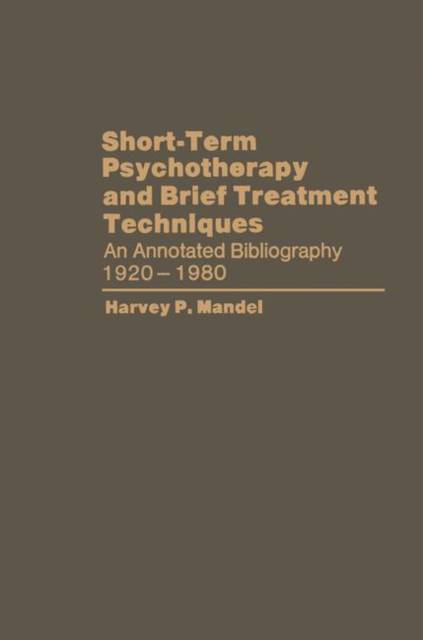
- Afhalen na 1 uur in een winkel met voorraad
- Gratis thuislevering in België vanaf € 30
- Ruim aanbod met 7 miljoen producten
- Afhalen na 1 uur in een winkel met voorraad
- Gratis thuislevering in België vanaf € 30
- Ruim aanbod met 7 miljoen producten
Zoeken
Short-Term Psychotherapy and Brief Treatment Techniques
An Annotated Bibliography 1920-1980
Harvey P Mandel
Paperback | Engels
€ 83,95
+ 167 punten
Omschrijving
The Scope of Brief Therapy Within the last two decades there has been a dramatic expansion in the uses of short-term treatment (Grayson, 1979, Small, 1979). Brief therapies have been and continue to be widely used with a number of different patient popu- lations in a broad variety of service settings. They have been reported in use with children, adolescents, adults and the aged; in groups, families, and individual treatment; on college campuses, high schools, in community mental health centers, in child guidance clinics, in private psychiatric clinics, in hospitals as part of out-patient or in-patient therapy, in programs of preventive community mental health; with the rich, the middle class, and the poor (Barten, 1971, 1972; Caplan, 1961, 1964; Small, 1979; Wolberg, 1965). Further, short term methods of therapy range across all of the major and well-known theoretical orientations found in the broader field of psychotherapy. There are some unique theoretical contributions which can be found within this field as well.
Specificaties
Betrokkenen
- Auteur(s):
- Uitgeverij:
Inhoud
- Aantal bladzijden:
- 704
- Taal:
- Engels
Eigenschappen
- Productcode (EAN):
- 9781468439137
- Verschijningsdatum:
- 22/03/2012
- Uitvoering:
- Paperback
- Formaat:
- Trade paperback (VS)
- Afmetingen:
- 152 mm x 229 mm
- Gewicht:
- 929 g

Alleen bij Standaard Boekhandel
+ 167 punten op je klantenkaart van Standaard Boekhandel
Beoordelingen
We publiceren alleen reviews die voldoen aan de voorwaarden voor reviews. Bekijk onze voorwaarden voor reviews.











